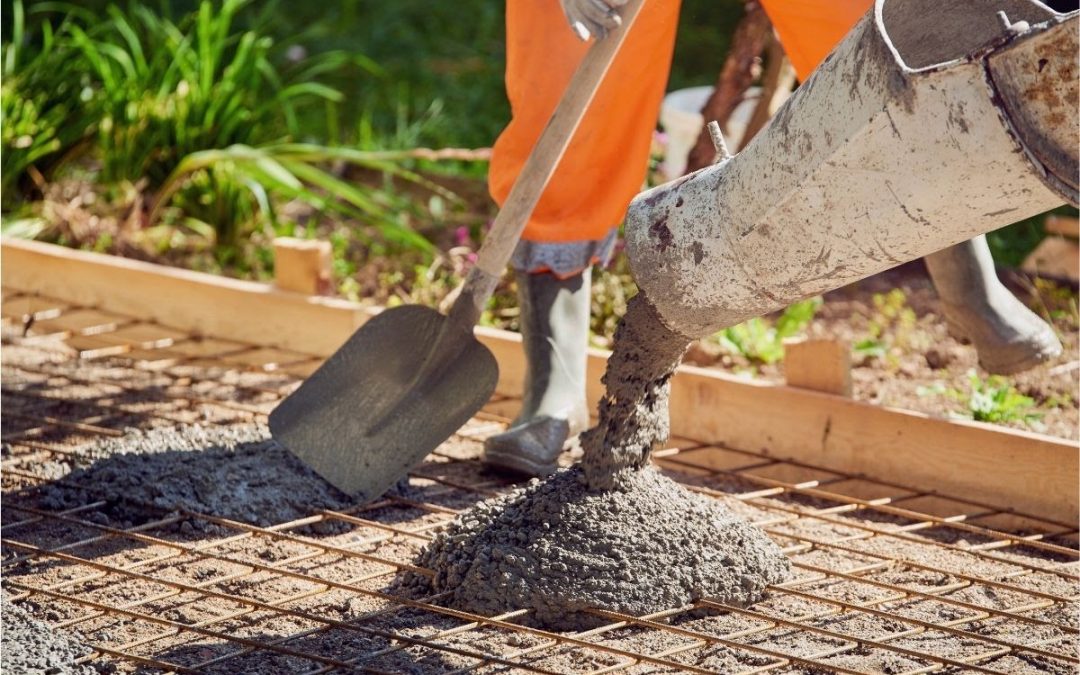Published February 5, 2021
Two terms in construction that people often mix up are concrete and cement. Most people believe these two things are the same – the material with which we build buildings and floors. However, this is a common misconception; cement is actually a crucial component to concrete, but not vice versa. In this article, we’ll look at concrete vs. cement to understand their fundamental differences.
What is cement?
Since we mentioned that cement is a component of concrete, I think it’s fitting to define cement first. Cement is a binding agent that is heavily utilized in most, if not all, construction projects. The most common cement you can expect to find is Portland cement, which is not actually its brand. Portland cement comes in a dry powdery form before it is mixed with water and can be used to stick building materials together. But how is it cement made?
How it’s made
It starts with extracting limestone and other primary materials at a quarry through blasting. Cement manufacturing creates a unique chemical combination of calcium, aluminum, iron, silicon, and other trace materials. Typical materials that cement is made out of include limestone, shells, and chalk. All these materials are reduced to size so that they may be transported to a plant for processing.
The material is then combined with silica sand, shale, clay, gypsum, slate, and other minerals at the plant, producing raw meal uniform in size and chemistry. This raw meal goes through an extremely hot kiln to cause several structural changes and chemical reactions that imbue the once raw meal with strength and other properties. The screaming-hot gray chunks of rock that come out of the kiln are called “clinker.” These are then ground up into a nice, fine powder with samples going to a laboratory to check whether its attributes meet the desired criteria.

What is concrete?
At its core, concrete is a mixture of paste and aggregates (sand, rock, and gravel). This paste combines water and cement, which serves as the primary binding agent; cement comprises approximately 10 to 15 percent of all concrete. In its initial state, concrete is wet and malleable, allowing you to handle and mold it to the desired shape. Once it dries, it becomes a solid, strong, and durable structure that can last several years.
It’s crucial to have an appropriate amount of cement in your concrete, as too little of it can cause problems in the future. Too little cement can produce a rough and crumbly finished product that is hard to place and creates porous concrete. Too much cement can make concrete that’s easily placed and spread to create a smooth surface. However, this concrete will be prone to cracking and is generally not economical.
Concrete use dates back to the early ages, with the earliest documentations coming from the Roman Empire. While even earlier civilizations may have used some sort of concrete or concrete-like material, the Romans used a mixture of quicklime, pozzolana, and an aggregate of pumice. The most outstanding example of early concrete use is seen in the Pantheon, the largest concrete dome without any reinforcements in place.
Why use concrete?
Concrete stands head and shoulders above all other materials as the most widely used one in construction settings. It’s known for its strength, durability, versatility, and efficiency. These properties make it incredibly attractive as a sturdy and lasting choice for both commercial and residential projects.
In nearly every construction project, you can expect to find some concrete. This is due to concrete’s versatility, allowing you to create massive infrastructures like bridges, dams, and skyscrapers with this one material.
Unlike other materials like wood that rots and degrades, concrete may even get stronger as the years pass. It’s also a sustainable option, as you can easily recycle concrete from old buildings with other recycled materials to make a whole new batch of concrete. Lastly, it’s incredibly energy-efficient with its ability to absorb heat and thermal efficiency.
Interested In Cutting Technologies?
For nearly 40 years Cutting Technologies (CTI) has been the go-to demolition contractor for technically demanding, one-off jobs. Our wealth of experience enables CTI to bring “outside-of-the-block” approaches to achieve the impossible. Contractors trust CTI to get the job done right. Take a look at our demolition services on our website.

About The Author
Terrence Tan Ting is an industrial engineer by profession but a full time writer by passion. He loves to write about a wide range of topics from many different industries thanks to his undying curiosity.

